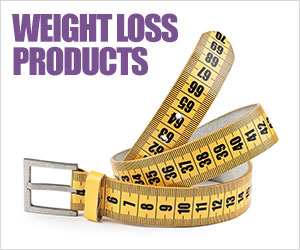Syndrome X and Weight Loss

Syndrome X has recently been in the news because critics of the popular CSIRO diet suggest that the research it is based on is biased because it was conducted solely on women with signs of Syndrome X.
This article discusses Syndrome X and explains what it is, how prevalent it is, what the risks associated with it are, how to determine if we have it and what can be done to treat it, or better yet, prevent it in the first place.
What is Syndrome X?
Also known as Metabolic Syndrome, Insulin Resistance Syndrome, Glucose Intolerance,
Pre-diabetes and Dysmetabolic Syndrome, Syndrome X is a collection of health
risks that increase our chance of developing heart disease, stroke and diabetes.
Specifically, Syndrome X refers to a group of health problems that can include
insulin resistance (the inability to properly deal with dietary carbohydrates
and sugars), abnormal blood fats (such as elevated cholesterol and triglycerides),
being overweight, and having high blood pressure.
Doctors have known for years that each of these health problems individually
can increase the risk of other diseases, however, until relatively recently,
they failed to connect the dots and see the compounding affects of these
health problems as part of a syndrome.
How prevalent is Syndrome X?
Some people are genetically predisposed to insulin resistance and therefore
Syndrome X. These people are most at risk of developing serious health conditions
when combining this predisposition with lifestyle habits that aggravate the
situation.
But anyone can acquire Syndrome X, not just those with a genetic predisposition
for it.
According to some estimates, at least one in four women has Syndrome X,
many without even knowing it.
But Syndrome X is certainly not confined to the superior sex. Many men have
it too. Nor is it confined to adults and the elderly, more and more children
each year are diagnosed with the most prevalent factor of Syndrome X, insulin
resistance.
In America more than one in five people are estimated to have Syndrome X.
Generally, the number of people with metabolic syndrome increases with age,
affecting more than 40 percent of people in their 60’s and 70’s.
In fact many people over the age of 35 are very familiar with some of the
early signs and symptoms, if not the name, of this condition. These signs
and symptoms include:
- Feeling sluggish, both physically and mentally.
- Gaining weight and having increasing difficulty losing it.
- Having our blood pressure, cholesterol, triglycerides, & blood sugar levels creep up.
- Feeling depressed, irritable, or angry when we shouldn't be.
- Aging faster than we should.
What are the primary causes Syndrome X?
Insulin resistance and Syndrome X are caused primarily by a diet high in
refined carbohydrates, such as those found in processed cereals, muffins,
breads and rolls, pastas, cookies, donuts, and soft drinks.
In addition to raising glucose and insulin to unhealthy levels, these refined
carbohydrates are also devoid of the many vitamins, minerals, and vitamin-like
nutrients our bodies need to properly utilize these foods and ward off diseases.
What are the risks of Syndrome X?
Experiencing more than one of the symptoms of Syndrome X indicates that
something is fundamentally wrong with our health.
Left untreated, Syndrome X can lead to us experiencing serious diseases
such as:
- Obesity.
- Hypertension.
- Nervous system disorders.
- Eye disease.
- Diabetes.
- Cardiovascular disease.
- Cancer.
- Alzheimer's disease.
How is Syndrome X diagnosed?
When it comes to diagnosing Syndrome X there are no absolutes.
However, the presence of Syndrome X is generally thought to be diagnosable
by a series of specific medical tests that can be performed by a doctor or
other suitably qualified medical practitioner.
For a clinical diagnosis of Syndrome X to be confirmed, sufferers are said
to have three or more of these conditions present:
- Central obesity or a waist circumference over 88cm (women), or 102cm (men).
- Triglycerides greater than 1.7mmol/L.
- Blood pressure greater than 130/85.
- HDL cholesterol less than 1.3mmol/L (women) or 1.0mmol/L (men).
- Fasting glucose greater than 6.1mmol/L.
What can be done about Syndrome X?
Because lifestyle factors relating to poor dietary and exercise habits often
lead to insulin resistance and Syndrome X, good nutrition, eating right and
getting the necessary vitamins and minerals, and becoming more active are
often the best medicine in terms of reversing or preventing insulin resistance
and Syndrome X in the first place.
When it comes to our diet, reducing the amount of refined carbohydrates
or sugars we eat is the single most important thing we can do.
For more information and ideas for reducing sugar in your diet, see our
article Reducing Sugar
in our diet.
When it comes to vitamins and minerals, the following are believed to help
the body cope with insulin resistance and minimize the damage done to us
by it:
- Alpha-lipoic acid.
- Vanadium, found in vanadyl sulfate supplements.
- Chromium.
- Omega-3 fatty acids (for more information see our article on Omega-3 and weight loss.
- Vitamin E
In addition to getting help from your doctor, a dietitian can also be a
valuable resource in designing a diet tailored to your exact needs.
For some people who are very obese, diet, exercise, and even medication
may prove to be unsuccessful in reducing their weight sufficiently in order
to improve their situation.
In these extreme circumstances, these people may benefit most from weight
loss surgery such as Bariatric surgery (Lap-Band surgery).
Preventing Syndrome X
As they say, an ounce of prevention is worth a pound of cure and this is
certainly true when it comes to Syndrome X.
To help prevent Syndrome X it is necessary to:
- Exercise regularly throughout your life.
- Encourage children to have daily physical activity and make healthy food choices.
- Eat a healthy, balanced diet low in saturated fats and high in nutrient-rich fruits and vegetables.
- Don’t smoke.
- Recognize that you may have a genetic (inherited) predisposition for diabetes, heart disease, and the metabolic syndrome.
- Have regular medical check-ups and initiate early treatment for high blood pressure.
- Consume healthy fats such as those in canola oil, olive oil, flaxseed oil and nuts.
- Limit alcohol intake - consume no more than one drink a day for women or two drinks for men.
- Regularly check your waist-to-hip ratio.
- Reduce stress levels wherever possible.
Conclusion
Syndrome X has recently been in the news because critics of the popular
CSIRO diet suggest that the research it is based on is biased because it
was conducted solely on women with signs of Syndrome X.
This article discussed Syndrome X and explained what it is, how prevalent
it is, what the risks associated with it are, how to determine if we have
it and what can be done about it if we do.
Good luck with your weight loss and thanks for visiting weightloss.com.au.
© Copyright Ultimate Weightloss.
This article was written by Scott Haywood.
Scott is the editor of weightloss.com.au. Scott has developed an expertise in fitness and nutrition, and their roles in weight loss, which led him to launch weightloss.com.au in 2005. Today, weightloss.com.au provides weight loss and fitness information, including hundreds of healthy recipes, weight loss tools and tips, articles, and more, to millions of people around the world, helping them to lead happier, healthier, lives.
You can follow Scott on Google+ for more interesting articles.





















